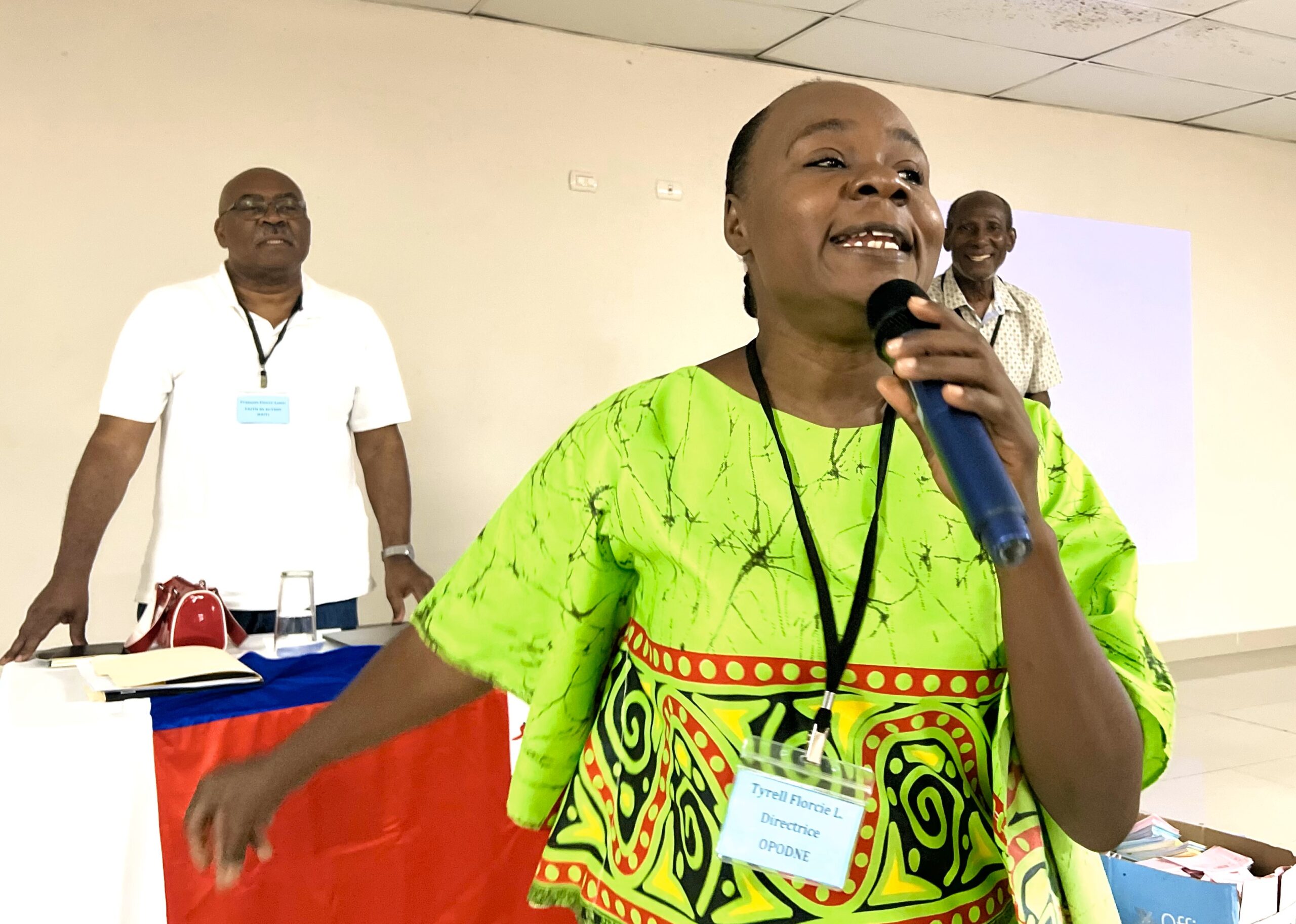“We have not been deterred by the loss of Inter-American Foundation funding for our agricultural campaign.” – Florcie Tyrell, OPODHA Executive Director In North and Northeast Haiti, Florcie Lareche…
Haitians Rebuilding Haiti: Foreign Assistance Lessons from the 2010 Earthquake
Highlights of U.S. reconstruction assistance to Haiti after the 2010 earthquake
- Just 3.7% of the $2.6 billion in USAID reconstruction and development funding to Haiti from 2010 to 2020 was managed by Haitian organizations, according to re-analyzed data in an April 2021 GAO report.[i]
- One Washington, DC private company, Chemonics, received more than $200 million dollars, twice as much as all local Haitian partners combined.
- It is likely that less than half of U.S. funds ever touched Haitian soil, given the high overhead and administrative costs charged by for-profit companies and international NGOs.
- S. post-2010 earthquake funding largely bypassed Haitian civil society and faith-based organizations, and local governments.
- The decision to provide aid almost exclusively through foreign entities exacerbated a long-term trend of bypassing Haitian institutions and helped transform Haiti into a “republic of NGOs.” As a result, U.S.-based for-profit development companies and NGOs gained enormous power and influence over life in Haiti.
- Much of the U.S. funding went to areas of Haiti not damaged by the 2010 earthquake, most notably to the construction of a $280 million free-trade industrial park in Northeast Haiti, which destroyed prime agricultural land while creating a fraction of low-wage jobs promised.
- Few housing units promised were created,[ii] and more than a decade later, many Haitians who lost their homes are still living in temporary shelter.
- S. foreign assistance and diplomacy toward Haiti over the past decade has reinforced a small corrupt circle of economic and political elites rather than supporting broad grassroots civil society movements working to restore democracy and put Haiti on a path to inclusive and sustainable development.
Recommendations for a Haitian-led recovery
- Haiti’s robust civil society has made it possible for the Haitian people to survive despite repeated natural and man-made disasters. Grassroots and faith-based organizations are among Haiti’s most valuable resources. Haitian organizations know the local conditions and needs and are able to mobilize local resources. They should be the main partners of reconstruction efforts by U.S. and international funders.
- The U.S. should commit to providing at least half of its rebuilding assistance to Haiti through projects led or co-led by Haitian organizations. This goal will require that USAID reach out directly to Haitian organizations, create accessible processes for listening to the priorities and ideas of Haitian civil society leaders outside the small circle of existing USAID partners, and craft smaller and less complex projects.
- The 53 local organizations funded by the Inter-American Foundation (IAF) over the past decade are a critical starting place for localizing aid. Direct U.S. funding through IAF to dozens of Haitian-based organizations belies the idea that no Haitian organizations are capable of managing development funds. The $10.8 million provided by IAF to local Haitian organizations over the past decade is a tiny fraction of funds given to the largest for-profit company, Chemonics, but is the seed for a different approach to reconstruction that strengthens civil society.
- One strength of Haiti’s constitution is that it provides structures for people to participate in local planning and development. U.S. foreign assistance to Haiti should reinforce local governance and community participation by earmarking government funding to local municipalities in the three departments (Nippes, Grand’Anse, and Sud) most damaged by the 2021 earthquake, and requiring popular participation in planning decisions.
- Restoration of democracy in Haiti must include free and fair municipal elections, given how important transparent, accountable local government is to rebuilding Haiti.
- The departments most damaged by the 2021 earthquake are three of the five most rural departments in Haiti. Like much of Haiti, these communities are heavily reliant on small-scale agriculture. The U.S. needs to work with farmers and their organizations in these departments and across Haiti to help them adapt to climate change and capitalize their land through crop insurance, small-scale loans, and tool banks.
- People whose homes were damaged or destroyed need permanent housing, not long-term tent camps. Schools, health clinics, hospitals, and churches also need to be rebuilt.
- Successfully rebuilding from the 2021 earthquake hinges on restoring real democracy in Haiti, which requires a broad and inclusive transitional government. Fair, credible, and violence-free elections are only possible with a government and electoral process that has participation and support from civil society and faith leaders.
- The Biden Administration should fully engage Haitian civil society and faith leaders, along with the Haitian diaspora community in the U.S. Both are critical sources of support for rebuilding Haitian communities and restoring Haitian democracy.
- Haiti needs another large shipment of COVID-19 vaccines, with resources, support, and targeting to ensure that they reach the most vulnerable people across the country.
[i] Government Accountability Office, HAITI, USAID Funding for Reconstruction and Development Activities since the 2010 Earthquake, April 2021 GAO_21-263, Appendix data re-analyzed by Faith in Action.
[ii] Government Accountability Office, HAITI RECONSTRUCTION USAID Has Achieved Mixed Results and Should Enhance Sustainability Planning, June 2015, GAO-15-517.



